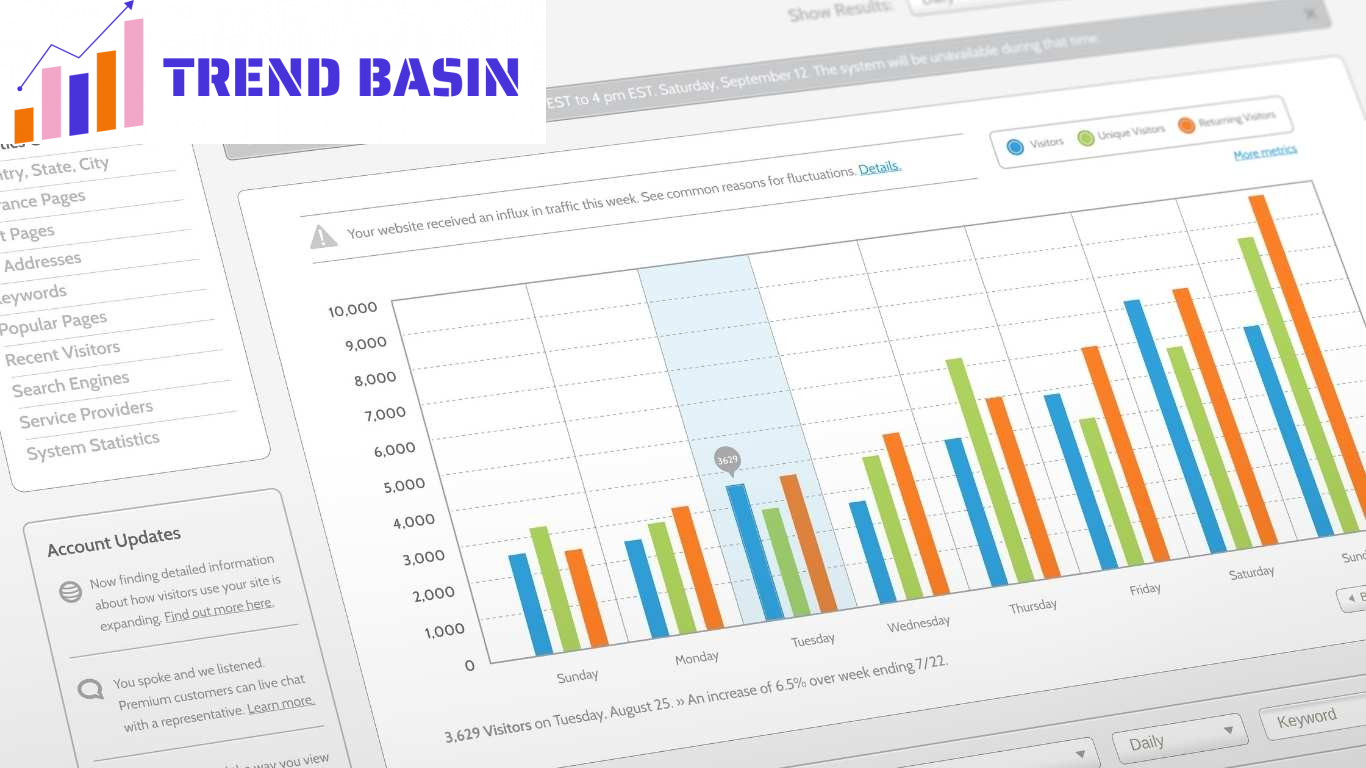Maximizing ROI with Pay-Per-Click (PPC) Advertising
In today’s digital landscape, businesses must adopt effective marketing strategies to stay competitive. One such strategy is Pay-Per-Click (PPC) advertising.
This model allows businesses to pay only when a user clicks on their ad, making it a cost-effective way to drive traffic to websites.
However, merely setting up a PPC campaign is not enough. To truly maximize your return on investment (ROI), you must employ various strategies and techniques.
In this article, Trend Basin will explore how to maximize ROI with PPC advertising, focusing on practical tips and strategies that you can implement right away.
Key Takeaways
1. Define clear goals and objectives for your PPC campaigns.
2. Conduct thorough keyword research to identify high-performing keywords.
3. Optimize ad copy and landing pages to improve conversion rates.
4. Utilize A/B testing to refine your PPC strategies continuously.
5. Monitor and analyze campaign performance to make data-driven decisions.
What is PPC Advertising?
PPC advertising is a model of internet marketing in which advertisers pay a fee each time their ad is clicked. It is essentially a way of buying visits to your site rather than attempting to earn those visits organically.
Search engines like Google and social media platforms like Facebook offer PPC advertising opportunities, allowing businesses to display their ads to targeted audiences.
Why is ROI Important in PPC Advertising?
Return on investment (ROI) is a crucial metric for evaluating the success of your PPC campaigns. It helps you determine whether your advertising spend is generating sufficient revenue.
Maximizing ROI ensures that you make the most out of your budget, allowing you to reinvest in successful campaigns and scale your marketing efforts.
How to Set Clear Goals for Your PPC Campaigns?
Setting clear goals is the foundation of a successful PPC campaign. Here’s how to do it:
1. Define Your Objectives: Determine what you want to achieve with your PPC campaigns. This could be increasing website traffic, generating leads, or boosting sales.
2. Use SMART Criteria: Ensure your goals are Specific, Measurable, Achievable, Relevant, and Time-bound. For instance, instead of saying, “I want more sales,” specify, “I want to increase sales by 20% in the next quarter.”
3. Track Progress: Regularly monitor your progress towards these goals. Adjust your strategies if you are not on track to meet your objectives.
How to Conduct Keyword Research for PPC?
Effective keyword research is vital for the success of your PPC campaigns. Here are some strategies to find the right keywords:
1. Use Keyword Research Tools: Utilize tools like Google Keyword Planner, SEMrush, or Ahrefs to discover relevant keywords for your business. These tools can help you identify search volumes and competition levels.
2. Analyze Competitors: Look at the keywords your competitors are bidding on. This can provide insights into which keywords may be worth targeting.
3. Consider Long-Tail Keywords: Long-tail keywords are longer phrases that users might search for. They tend to have lower competition and can result in higher conversion rates.
4. Group Keywords: Organize your keywords into tightly themed groups. This will help you create more targeted ad campaigns.
How to Create Compelling Ad Copy?
Your ad copy plays a crucial role in attracting clicks. Here are some tips to create compelling ads:
1. Focus on Benefits: Highlight the benefits of your product or service. Tell users how it can solve their problems or improve their lives.
2. Use Strong Call-to-Action (CTA): A clear and compelling CTA encourages users to click on your ad. Phrases like “Shop Now,” “Get a Free Trial,” or “Learn More” can be effective.
3. Incorporate Keywords: Include your target keywords in the ad copy. This not only improves relevancy but can also increase your Quality Score on platforms like Google Ads.
4. Test Different Variations: Create multiple versions of your ad copy to see which performs best. A/B testing can help you identify what resonates most with your audience.
How to Optimize Landing Pages for PPC Campaigns?
Once users click on your ad, they should be directed to a well-optimized landing page. Here’s how to ensure your landing pages are effective:
1. Align with Ad Copy: The landing page content should match the ad copy. If your ad promises a discount, make sure the landing page prominently displays that offer.
2. Simplify Navigation: Remove unnecessary distractions. The landing page should have a clear purpose, guiding users toward the desired action.
3. Use High-Quality Images: Visuals can enhance user experience. Include relevant, high-quality images that align with your offer.
4. Ensure Fast Loading Times: Slow-loading pages can lead to high bounce rates. Optimize images and minimize scripts to enhance loading speeds.
What is A/B Testing and How to Implement it?
A/B testing, also known as split testing, involves comparing two versions of an ad or landing page to determine which performs better. Here’s how to implement A/B testing in your PPC campaigns:
1. Choose One Variable: Focus on one element at a time, such as the headline, image, or CTA. This makes it easier to determine what drives performance.
2. Run Tests Simultaneously: To ensure accuracy, run your A/B tests at the same time. This helps eliminate external factors that could affect results.
3. Analyze Results: After running the test for a sufficient duration, analyze the results. Use statistical significance to determine which version performed better.
4. Make Data-Driven Decisions: Use the insights gained from A/B testing to refine your PPC strategies continuously.
How to Monitor and Analyze Campaign Performance?
Monitoring your PPC campaigns is essential for maximizing ROI. Here are some key performance indicators (KPIs) to track:
1. Click-Through Rate (CTR): This measures how often users click on your ad compared to how many times it is shown. A higher CTR indicates your ads are relevant and compelling.
2. Conversion Rate: This measures the percentage of users who take the desired action after clicking on your ad. A low conversion rate may indicate issues with your landing page.
3. Cost Per Acquisition (CPA): This metric helps you understand how much you spend to acquire a customer. Aim to keep CPA below the lifetime value of your customers.
4. Return on Ad Spend (ROAS): This metric indicates the revenue generated for every dollar spent on advertising. Higher ROAS means better campaign performance.
What Role Does Ad Quality Score Play?
Quality Score is a metric used by Google Ads to measure the relevance and quality of your ads and keywords. A higher Quality Score can lead to lower costs per click and better ad placements.
Here’s how to improve your Quality Score:
1. Enhance Relevancy: Ensure that your keywords, ad copy, and landing pages are closely related. This improves user experience and increases Quality Score.
2. Improve CTR: Higher click-through rates contribute positively to your Quality Score. Optimize your ads to make them more appealing to users.
3. Optimize Landing Pages: A well-optimized landing page enhances user experience and contributes to a higher Quality Score.
How to Utilize Remarketing in PPC Campaigns?
Remarketing allows you to target users who have previously interacted with your website or ads. Here’s how to effectively use remarketing:
1. Segment Your Audience: Create segments based on user behavior. For instance, target users who added items to their cart but didn’t complete the purchase.
2. Craft Personalized Ads: Use personalized ad copy and visuals to engage users. Tailoring your message can significantly improve conversion rates.
3. Adjust Bidding Strategies: Consider using different bidding strategies for remarketing campaigns. For example, you may want to increase bids for users who have shown a high intent to purchase.
What are the Common Mistakes to Avoid in PPC Advertising?
Avoiding common pitfalls can enhance your PPC performance. Here are some mistakes to steer clear of:
1. Neglecting Mobile Optimization: With a growing number of users accessing the internet via mobile devices, ensure your ads and landing pages are mobile-friendly.
2. Ignoring Negative Keywords: Failing to utilize negative keywords can lead to irrelevant clicks. Regularly update your negative keyword list to filter out unwanted traffic.
3. Not Tracking Performance: Monitoring your campaigns is essential for success. Regularly analyze performance metrics and adjust strategies accordingly.
4. Overlooking Audience Targeting: Ensure you are targeting the right audience. Utilize demographic, geographic, and psychographic targeting to reach potential customers.
Conclusion
Maximizing ROI with Pay-Per-Click advertising requires strategic planning, continuous optimization, and a keen understanding of your audience.
By setting clear goals, conducting thorough keyword research, crafting compelling ad copy, and monitoring performance, you can significantly enhance the effectiveness of your PPC campaigns.
Remember, the key to success in PPC lies in being data-driven and adaptable.
For more insights on web design and digital marketing, connect with us on LinkedIn and Facebook.



